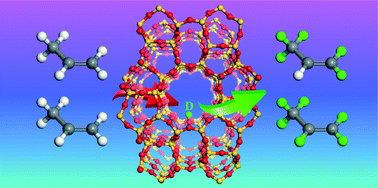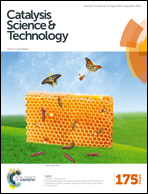Insights into the reaction mechanism of propene H/D exchange over acidic zeolite catalysts from theoretical calculations
Abstract
A comprehensive understanding of the reaction mechanisms of hydrocarbon conversion over acidic zeolite catalysts would be of great importance to optimize, modify and design more efficient catalytic materials. For this purpose, theoretical calculations based on molecular dynamics (MD) simulations and density functional theory (DFT) calculations have been performed in this work to explore the reaction pathways of propene H/D exchange over deuterated acidic ZSM-5 zeolite (D-ZSM-5). The deuterated propene-D5 is confirmed to be readily formed through the route involving an isopropyl intermediate. With regard to the formation of completely deuterated propene-D6, the propene loading is found to play a crucial role in governing the reaction pathway. The dimerization route (through the dimerization of propene, the intramolecular hydride transfer and then the cracking process) is demonstrated to be predominant with a relatively lower activation energy barrier (12.3 kcal mol−1) at higher propene loading, while the n-propoxy pathway is preferred at lower propene loading. Furthermore, the influences of the acid strength and pore confinement effect of zeolite on the propene H/D exchange reaction activity have been derived as well.


 Please wait while we load your content...
Please wait while we load your content...